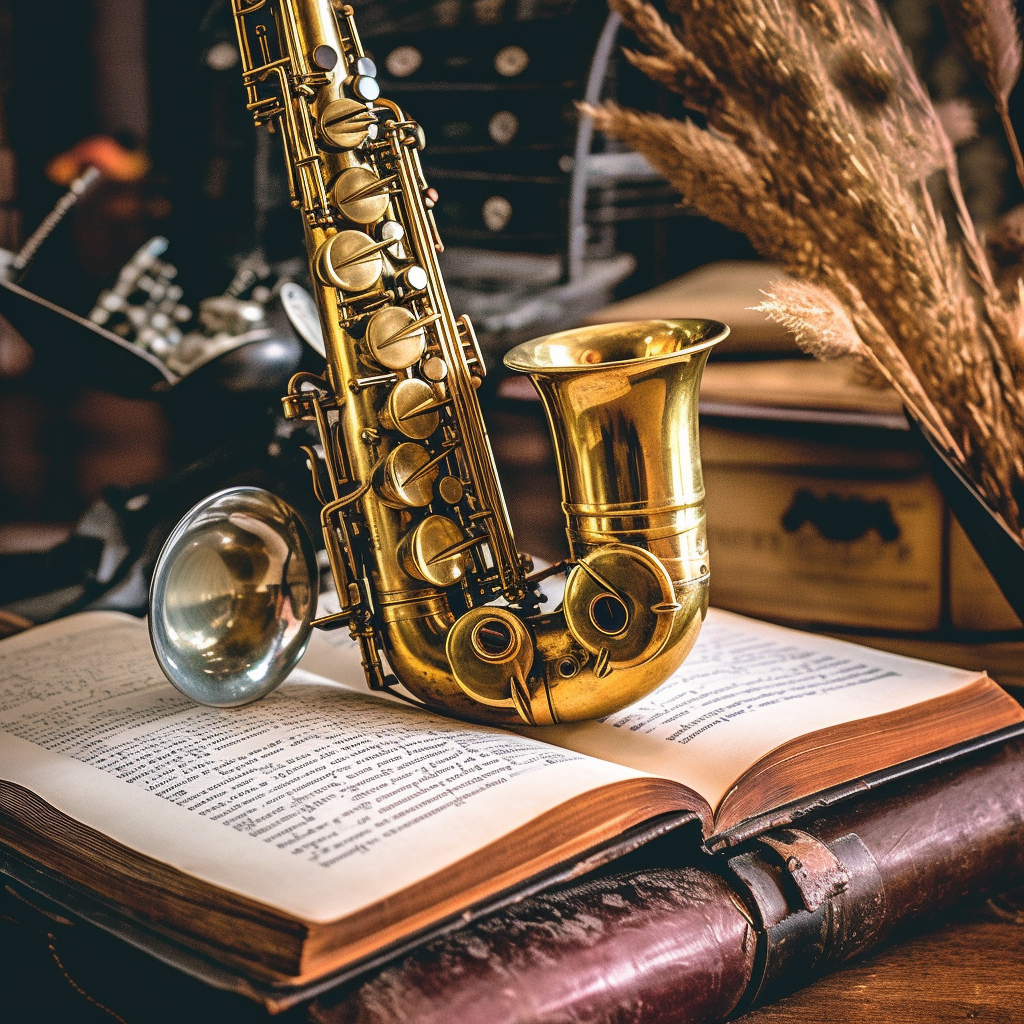What’s going on, family? Let’s switch lanes today. You know me as the sax maestro, Baby Soul, or Lil Man Soul – whichever works for you! There’s another craft I’m deeply into—writing. You might be wondering, ‘Jackiem, how do music and writing even connect?’ Well, it’s quite a fascinating blend. Let’s take a moment to dip into the unexpected similarities between composing a melody and crafting a story. Are you up for it? Of course, you are, because it’s me, and I know you just love it when I talk!
A Symphony of Words and Notes:
Bringing Characters to Life

When I compose a melody, each note carries a distinct flavor, adding depth and dimension to the song. It’s not so different from writing. In fact, it’s precisely how I sculpt characters in my stories. Each character, like a musical note, brings their unique color to the narrative symphony.
Take Zarya, for instance, the teenage hero of my sci-fi series. She’s got a fiery spirit, much like a resolute and passionate melody, a soaring solo that commands attention. Her traits resonate through the story, driving the narrative forward, and creating thrilling highs and intense lows that leave readers on the edge of their seats.
Harmony: Sustaining Balance in Story and Music
Then there’s harmony. Just as you can’t have a song where all notes play at once in a chaotic cacophony, you can’t have a story where all characters are constantly front and center. Some characters, like some musical notes, form the supporting backdrop that allows the main melody to shine. This balance creates harmony.
Consider the side characters in my stories. They’re like the rhythm section in a band—bass, drums, keyboards—they may not always have the spotlight, but they’re fundamental to the overall sound. Their presence, actions, and reactions form the solid framework on which the protagonist’s melody can sing.
From Musical Beats to Narrative Peaks:
Exploring Rhythm in Music and Writing.
The Heartbeat of a Song: Understanding Rhythm in Music
Let’s talk rhythm. You know that foot-tapping, head-bobbing pulse that a good melody can inspire? That’s rhythm at work—serving as the heartbeat of a song. It’s not just about the notes themselves, but the spaces between them, the pace at which they’re played, the pattern that they form. The rhythm is what gives the melody its unique character, transforming a simple sequence of notes into a memorable tune.
If you enjoy this, you might also like: The Evolution of Spy Tech in Literature
Translating Musical Rhythm to Written Words

Now, let’s translate that rhythm to the realm of writing. In a piece of written work, rhythm manifests itself in a slightly different, yet equally captivating way. Think about how you feel when you read a fast-paced thriller, each short sentence and rapid-fire dialogue making your heart race. Or the soothing flow of a beautifully written novel, its long, winding sentences lulling you into a tranquil state of mind. That’s the rhythm of words at work.
This rhythm doesn’t just happen; it’s carefully crafted through the choice of words, sentence length, punctuation, and even paragraph breaks. An author, like a musician, pays careful attention to pace and timing. Just as a musician manipulates tempo to create tension or excitement, a writer uses short, punchy sentences or longer, more complex ones to affect the story’s pace.
Delving deeper into the art of writing can be a rewarding journey. Writer’s Digest, a reputable resource, offers a wealth of articles and advice to inspire both budding and experienced authors. Explore it to strike the right chord in your storytelling.
Rhythm in Narrative Structure: From Verse-Chorus to Rising and Falling Action
Even the structure of a narrative can have a rhythm. Stories typically have a pattern, a rise and fall of action—exposition, rising action, climax, falling action, resolution—that carries readers on an emotional journey. This pattern is akin to the verse-chorus structure in many songs, creating anticipation and delivering payoff.
Feeling the Rhythm: Engaging the Reader
To find rhythm in writing, you have to feel it, just as you do when you’re swaying to the rhythm of a song. It’s all about the flow and structure, the pattern of stress and unstress, the pace. It’s this rhythm in storytelling that truly engages a reader, drawing them into the world the author has created and making them feel a part of it.
In essence, whether we’re talking about a melody in a song or the narrative in a book, rhythm is key. It’s the driving force that carries us through a song or a story, keeping us engaged and connected. Just as a song without rhythm would feel flat and lifeless, a story without rhythm would lose its grip on the reader. So next time you’re lost in a book or entranced by a tune, take a moment to appreciate the rhythm that’s carrying you through!
The Power of Improvisation
Improvisation, ah! The exhilaration of a great sax solo, the thrill of creating on the spot, weaving together notes into a spontaneous yet coherent melody. I’ve always been a big fan of Charlie Parker. I grew up watching his masterful improvisation techniques. The same thing happens in writing—a character acting in a way that’s unexpected yet totally aligns with their personality, or a sudden twist in the plot. This spontaneity, this improvisation, it’s what keeps a story exciting and fresh in my opinion.
Emotion: The Common Thread
Emotion is the soul of both music and storytelling. A poignant melody or a heart-wrenching plot twist can stir deep feelings, leaving a lasting impact. Whether it’s through a beautiful chord progression or a powerful prose, both mediums strive to evoke emotions and touch hearts.
Conclusion
In essence, a story is much like a song. It’s not simply a collection of words, just as my most recent hit song, ‘Missing You’, is not merely a random assortment of notes. There’s rhythm, improvisation, and emotion, all intricately intertwining in a delicate ballet beneath the surface.
So, the next time you’re enjoying the soulful notes of “Missing You” or delving into one of my stories, appreciate the rhythm, the thrill of improvisation, and the poignant words. Remember, whether it’s through my saxophone or my pen, I’m always aiming to strike a chord within you. Stay groovy, keep reading, and keep listening, because you know how much I love it when you do!
I hope you enjoyed this exploration into the harmonious world of music and writing as much as I enjoyed sharing it. If you know any music lovers, avid readers, or fellow authors who might find this delightful symphony between composing music and crafting stories as fascinating as we do, do them a favor. Hit that share button and spread the rhythm! Let’s get everyone humming to our melody. Until next time, keep the beat going and the pages turning!

